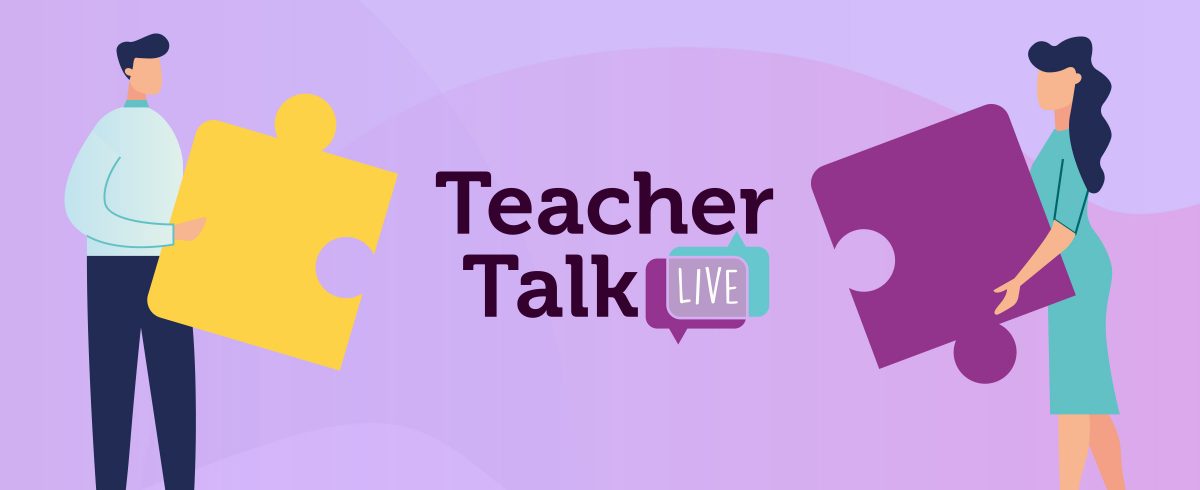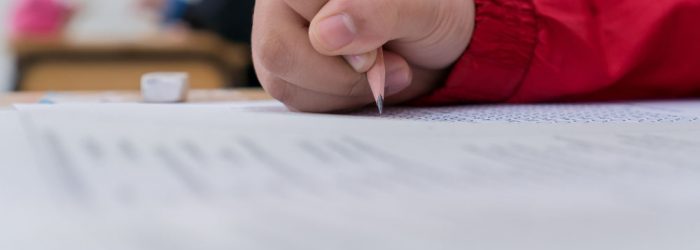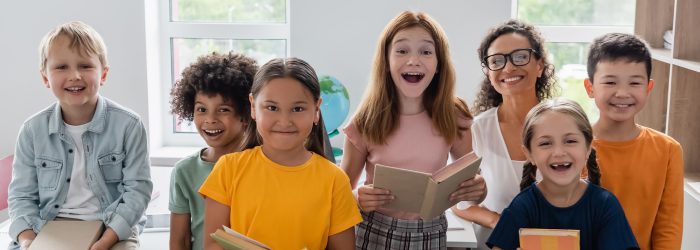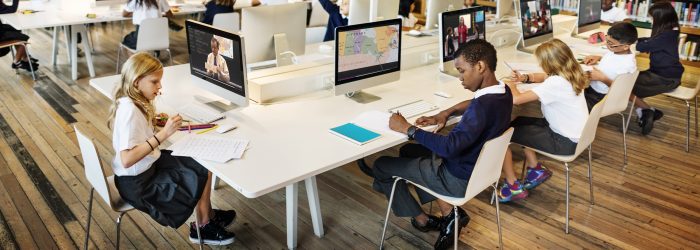In the latest Teacher Talk Live event, we sat down with some of our fellow educators and discussed the importance of upper elementary literacy within education. One of the main roles we have as teachers is instilling literacy skills within our students.
What Is Literacy?
To put it plain and simple, literacy is an individual’s ability to read and write. Although the dictionary definition sounds elementary, there is so much more that goes into literacy than just the spelling and sounding out of letters. Overall, literacy is what equips individuals to become independent thinkers.
Our role as teachers is to provide students with the proper skills to become independent thinkers that can defend their beliefs on any topic. The end goal of this is for students to have a clear and biblical worldview and to have the ability to articulate their faith and belief system in a world so desperately in need. However, this is not a skill that develops overnight.
Progression of Literacy
Literacy progresses as the student transitions from grade levels in the Abeka program. Applications such as Phonics Reading assist in this growth and constantly reinforce our students’ skills from past grade levels.
Through our program, we can see the progression and growth of our students from year to year. The student will go from learning how to read to eventually analyzing, responding, and proving their own beliefs and opinions.
Learning to Read
For kindergarten teachers through second-grade students, the main focus is to educate students on the basics of reading.
The Phonics tools used during this stage will help beginner-level readers to sound out words, learn how to spell, and understand syllables and suffixes, among other skills. With these basic skills, students are now ready to progress to the next level.
Reading to Learn
Now that students have gained the ability to read stories by themselves, they can use this tool to learn from what is being read. Second through fourth-grade students will now be able to retain what is being read and to further their skills in other subjects as well.
The goal of this basic foundation of learning how to read is to instill a love for reading in our students.
Reading to Attain Knowledge
Teachers of fourth through sixth graders are slowly moving away from the Phonics learning style but will continue to reinforce the principles learned in those developing years.
Attaining knowledge may seem repetitive of reading to learn, but the main differentiator is a new set of tools that are provided in these grade levels. These tools will help students become more literate.
Reading to Analyze, Respond and Prove
As students learn how to attain knowledge, they are equipped to use that knowledge to analyze, respond and prove with evidence and research. Now that the “toolbox” for literacy has grown, fourth through 12th-grade students will learn how to become independent thinkers, which is an important lifelong skill.
This skill will help them beyond the walls of a classroom and enrich their careers, relationships, and day-to-day interactions.
The Literacy “Toolbox”
Students cannot develop these thinking skills without the proper tools. It is our responsibility as educators to provide them with an essential “toolbox” to do so.
As mentioned before, the “toolbox” will grow as students progress through different grade levels. Some of the literary tools include basic elements, types of literature, text structures, elements of poetry, dialect, author intent, and summarization, to name a few. These tools will help students build upon their education to become the independent thinkers that we wish for them to be.
From a very early age, students will ask themselves the questions: “What can I learn from this story?” and “What characteristics can I emulate?”. Asking these types of questions will help students develop their biblical worldview and plant a seed to guide them in their reading selections throughout their lives.
Different tools in the “toolbox” will help readers from beginner level to expert attain important skill sets to further their education. This Teacher’s Talk highlights a few of these tools that bounce off of each other.
Basic Elements: Main Character
A basic element that will help students progress in learning about the main character of a story. For the beginner-level students, a teacher will want to read the story, introduce the main character, and then ask questions that challenge the readers to dig deeper within the story. These questions will help students begin to think independently.
As the grade levels progress, the questions and discussion topics will become more challenging. Students will learn new tools to further their literacy and help them grow in their education.
Abeka Goes In-Depth
For teachers, Abeka provides in-depth information about the main character and other elements of the literature within the front pages of the teaching textbooks. This information can guide teachers to further understand the stories being analyzed to better teach their students the material.
Once students learn the basic elements, they will now be able to dive into understanding text structure.
Text Structure
As students learn about text structure, they will now be able to reach back into their “toolbox” to write their own stories. Students will be able to process the thoughts of their story’s purpose and the overall morals learned from reading the story.
Abeka provides materials within students’ workbooks to help them gather their thoughts with a graphic organizer to plan their writing.
Text structure in both fiction and nonfiction can assist in the journey for students to become independent thinkers. However, the text structure within nonfiction stories can help students learn more about science and its world.
Informative Nonfiction
Through informative text structure, students will learn how to analyze and differentiate things around them. For example, students can analyze the differences between cats and dogs or apples and oranges.
This type of structure will help your students organize their thoughts and decide what information is trustworthy and what is not. Another skill is that students will prove what they believe to be true through evidence from the text and what they have learned.
Cause and Effect
Another tool is cause and effect. As the “toolbox” begins to get heavier, so does the knowledge being retained.
This tool will guide the growth of your students’ critical thinking skills. Students will be presented with different types of events and the consequences that come from them, which can be observed in fiction and nonfiction literature and history.
Not only will this skill help your students learn, but it will also help them realize the consequences of their actions.
Sequencing
The last text structure our talk highlighted was sequencing. As sequencing gets added to the “toolbox,” your students will be able to look at the chronological order of events. Abeka separates sequencing into learning a step-by-step process as well as observing something in chronological order.
Not only will sequencing help students better understand their reading, but it will also provide students with lifelong skills. This skill will assist them in voting, following manuals, taking job opportunities, and making basic life decisions that sometimes come with consequences.
Using the “Toolbox”
As teachers, we hope and pray that our students are well prepared for the next step of life, whether moving them to the next grade level or sending them off into the real world.
With a loaded toolbox, students can rely on a firm biblical worldview and critical thinking skills that they can use for the entirety of their lives.




Comments for Assembling the “Toolbox” to Build Independent Thinkers
Add A Comment
Your email address will not be published. Required fields are marked *